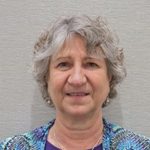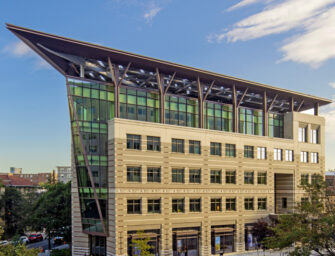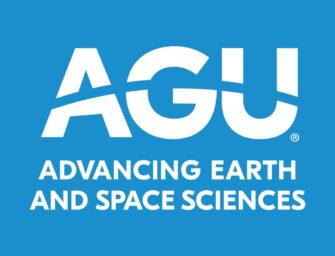AGU’s October Board Meeting: A Report from the Crow’s Nest

AGU Board of Directors Member Jill Karsten
As a former sea-going scientist, I was reminded during the recent AGU Board meeting (2-4 October) about the distinct roles played by a ship’s crew and the scientific party. The scientific party, much like the AGU Council, is responsible for thinking about how best to advance scientific research. They consider what types of collaborations, instrumentation, and data are needed to achieve such goals, as well as the best sites for collecting needed data. In contrast, the ship’s crew – much akin to the role played by the AGU Board – worries about the overall expedition cruise track, the ship’s safety, having the right crew to support the scientific party, and the overall provisioning for the voyage.
With an eye toward defining a meaningful cruise track for AGU over the coming decade, we began with a day of strategic planning, facilitated by Susan Stickley (Stratus, Inc.). This conversation was the next step in a year-long process to identify clear goals that will position AGU both to remain healthy as an organization and to continue its bold leadership role as we enter AGU’s next century of support for the global Earth and space science (ESS) community. AGU’s priorities for the next 5-7 years were discussed within the larger context by varying levels of public trust in science and the extent or lack of openness in the scientific process. A briefing on current U.S. federal science priorities by the current Director of the U.S. White House Office of Science and Technology Policy (OSTP) provided additional context for the Board’s deliberations about future directions. It seemed highly fitting to have Dr. Kelvin Droegemeier, a research meteorologist, tell us about the prevailing winds!
A key theme emerging during our strategic planning discussions was the implications of rapid growth in the participation of a global community in AGU’s activities and ESS Research and Development (R&D) investments. This evolution creates challenges for how AGU can build a global society that operates, partners, invests, and represents the ESS community throughout the world, especially in light of climate change and carbon footprint concerns. ¬¬Equally important in its implications for AGU’s core operations of meetings and publications was the recognition that “convergent” science – which integrates basic research and solutions-focused applications – is becoming increasingly important. The Board agreed that these transformations offer the potential to greatly expand the types of expertise represented within and engaged in AGU science, meetings, and publications, and to pursue a bold set of priorities for AGU’s next act.
Looking to AGU’s future, the Board also explored whether we have the right crew, the right tools, and the appropriate provisioning to realize our goals. The current crew on the Board brings a wealth of scientific expertise, but we also learned this meeting of their other personal passions. Who knew there were so many good cooks, athletes, musicians, and animal lovers on the Board! Board enrichment activities led by Marybeth Fidler (Cygnet Strategy) were designed to strengthen our ability to shepherd the strategic changes being envisioned. Through interactions with members of the AGU staff, we also confirmed how crucial and highly capable their contributions are to our collective efforts.
The future of the Meetings portfolio – one of AGU’s most important tools – and enhancements to virtual access and experiences were discussed as opportunities for greater global engagement and collaboration. The Board added a new tool by approving a Meetings Committee recommendation to convene a new biennial Hydrological Sciences meeting – modeled after the Ocean Sciences meeting – in collaboration with the Consortium of Universities for the Advancement of Hydrological Sciences, Inc. (CUAHSI), beginning in 2022.
A review of AGU’s 2020 budget showed that our financial provisioning is healthy, largely due to a robust investment portfolio. But, concerns were raised about the need for clear policies that address the growing operational costs of meetings, the need to offset the threats to AGU’s business model posed by open access publishing, and the reality that some programs originally piloted as strategic initiatives (e.g., the Ethics and Equity Center) will need other resources, if they are to be sustained. The Board considered changes proposed by the Development Board to the Organizational Support Policy and reviewed an Engagement Decision Criteria Framework that articulates AGU’s values and expectations for deciding which partnerships and collaborations might be pursued when seeking additional financial support.
Our final agenda topic concerned the routine biannual process for replacing AGU’s Board, Council and Committee leadership. But, with Chris McEntee’s unanticipated announcement that she would be stepping down from her role as AGU Executive Director in the coming months, the Board pivoted to discussions about the process for finding a new Captain for the ship. While we all wish Chris following seas and smooth sailing in her next adventure, we will miss deeply the clear command and steady hand on the wheel she has offered to the AGU community this past nine years. The Board is grateful that Chris has left AGU in a position of strength and competence, with substantial promise for even greater contributions on the horizon.




There are no comments
Add yours